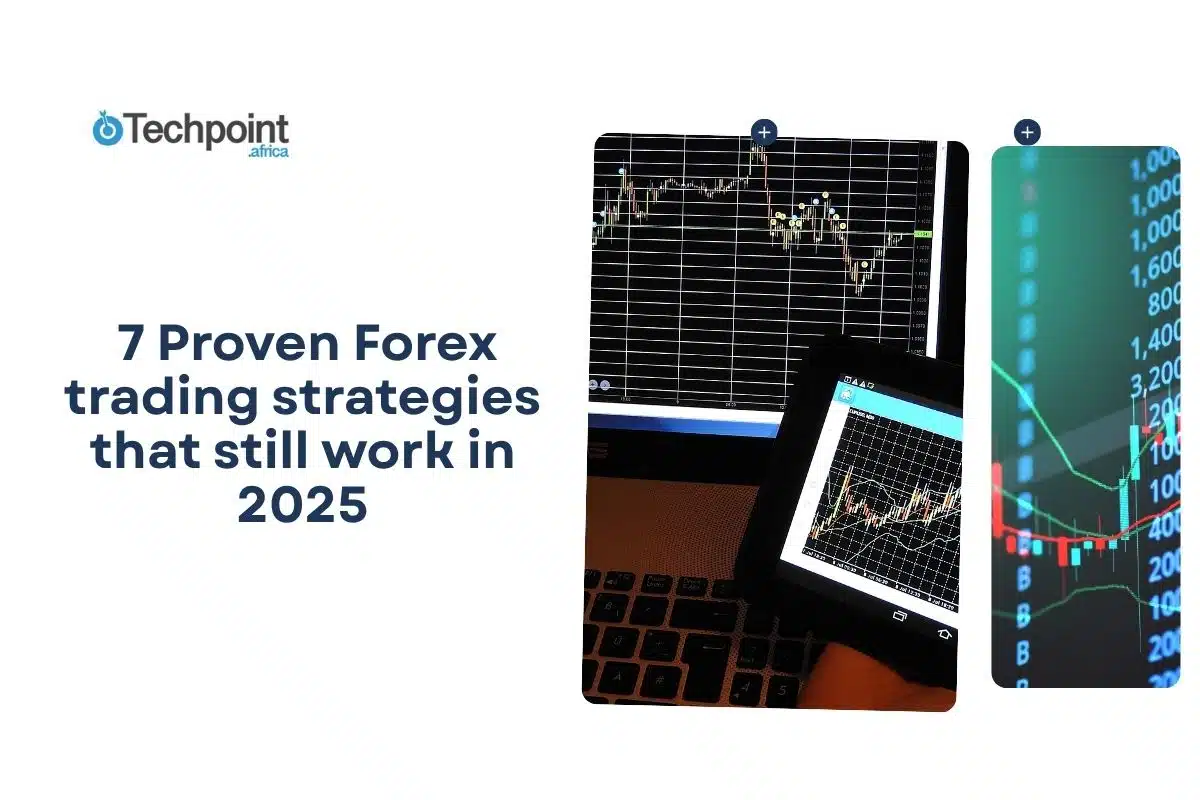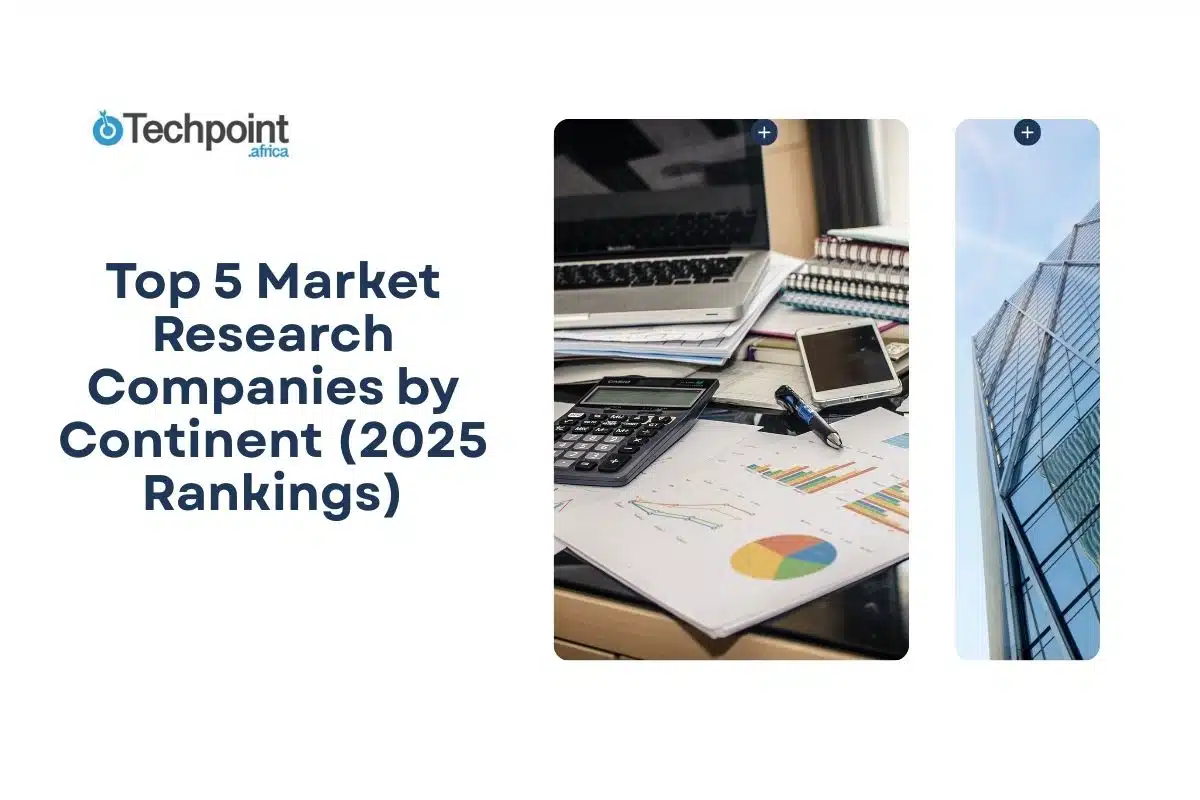According to Statista, the global Net Interest Income (NII) in the banking sector in 2025 is projected to reach $8.94 trillion, with traditional banks accounting for the majority share at $7.33 trillion. The market is expected to experience steady growth, with an annual growth rate (CAGR) of 4.91% from 2025 to 2029, reaching a market volume of $10.83 trillion by 2029.
This development shows that, despite global economic challenges, the banking sector continues to innovate and adapt to digital transformation to meet customers’ growing needs. Global banking is important to the world economy, and as the backbone of financial systems, it enables international trade, supports economic development, and facilitates capital flow across borders.
According to the World Bank, robust banking systems and capital markets efficiently flow funds toward their most productive uses, help governments raise investment capital, maintain financial safety nets, and speed payments securely across borders. With this adaptation to economic shifts, ranking banks by major financial metrics, such as net interest income, total assets, market capitalization, and profitability, becomes important.
Whether you’re a financial professional, investor, banking enthusiast, student, researcher seeking comparative economic data, or simply a reader interested in global finance and economic trends, this article will satisfy your curiosity and offer a comprehensive overview of the top banks in the world.
While you look forward to the real deal, let me share a secret: in the earlier quoted stats, China emerges as the lead contributor, generating the highest Net Interest Income, with a projected value of $4.7 trillion in 2025. This comes as no surprise given that Chinese banks hold the top four spots and several other positions among the 50 biggest banks in the world.
Keep reading!
Key financial metrics used in ranking the top banks in the world
Global banking ranking is not a product of mere emotion or beautiful buildings. You have to consider certain financial metrics to accurately come up with a list. These key financial metrics provide a comprehensive analysis of a bank’s stability, profitability, market reach, and overall financial health. Below are the primary metrics:
- Total Assets
This has to do with the overall size of a bank’s balance sheet, including loans, investments, and other holdings. It’s a primary indicator of a bank’s scale and market dominance. Per Statista, the value of global bank assets increased gradually between 2002 and 2023, despite some fluctuation. In 2023, global bank assets amounted to more than $188 trillion, up from $183.2 trillion a year earlier.
- Market capitalization
According to the World Bank, market capitalization (also known as market value) is the share price times the number of shares outstanding (including their several classes) for listed domestic companies. Investment funds, unit trusts, and companies whose only business goal is to hold shares of other listed companies are excluded.
This is calculated by multiplying a company’s stock price by its number of outstanding shares and reflects the market’s assessment of a bank’s overall value. The number encapsulates not just a company’s present performance but future potential as well.
- Total revenue
This has to do with the full income generated by a bank from all its operations, including net interest income, fees and commissions, trading income, investment income, and other non-interest revenue streams. Analysts also make use of revenue because it gives a broader view of a bank’s financial performance, beyond just lending activity. It reflects how well-diversified and dynamic a bank’s income model is, especially in markets where fee-based and investment services are growing.
- Return on Assets (ROA)
Return on Assets (ROA) shows how effectively a bank uses its assets to generate profits. It’s a profitability ratio that compares a bank’s net income to its total assets. A higher ROA indicates that the bank is more efficient in using its assets to produce income
- Net Interest Income (NII)
In banking, Net Interest Income (NII) represents the profit a bank generates from its core lending and deposit-taking activities. It’s essentially the difference between the interest income earned on loans and investments and the interest expenses paid out to depositors and other creditors. NII provides insights into how effectively a bank is managing its interest rate risks and maintaining stable profit margins. It offers a glimpse into the efficacy of a bank’s strategies for balancing its assets and liabilities.
These metrics collectively offer a comprehensive view of a bank’s performance across profitability, size, resilience, and market standing. They are used by analysts, regulatory bodies, and institutional investors in compiling global banking rankings and risk assessments.
The 50 biggest banks in the World (as of October 19th, 2024)
According to Risk.lexisnexis.com, a platform that provides data-driven research, resources, and global rankings on risk, compliance, and financial services, the list below features the top 50 banks in the world as of October 19, 2024, based on balance sheets dated December 31, 2023.
| Rank | Bank Name | Assets (US$ Millions) | Capital (US$ Millions) | Country |
| 1 | Industrial & Commercial Bank of China Ltd | 6,329,106 | 69,529 | China |
| 2 | Agricultural Bank of China Ltd | 5,646,015 | 49,558 | China |
| 3 | China Construction Bank Corp | 5,426,795 | 43,894 | China |
| 4 | Bank of China Ltd | 4,592,395 | 41,685 | China |
| 5 | JPMorgan Chase & Co | 3,875,393 | 31,509 | United States |
| 6 | JPMorgan Chase Bank, National Assoc. | 3,395,126 | 2,028 | United States |
| 7 | Bank of America Corporation | 3,180,151 | 84,762 | United States |
| 8 | HSBC Holdings plc | 3,038,677 | 9,631 | United Kingdom |
| 9 | BNP Paribas SA | 2,866,198 | 14,900 | France |
| 10 | Mitsubishi UFJ Financial Group Inc | 2,668,074 | 14,153 | Japan |
| 11 | China Development Bank | 2,641,480 | 59,649 | China |
| 12 | Bank of America, National Association | 2,540,116 | 3,020 | United States |
| 13 | Crédit Agricole SA | 2,421,474 | 10,130 | France |
| 14 | Citigroup Inc | 2,411,834 | 17,631 | United States |
| 15 | Postal Savings Bank of China Co Ltd | 2,226,891 | 14,041 | China |
| 16 | MUFG Bank Ltd. | 2,216,334 | 12,910 | Japan |
| 17 | Bank of Communications Co Ltd | 1,990,963 | 10,516 | China |
| 18 | Banco Santander SA | 1,987,551 | 8,950 | Spain |
| 19 | Sumitomo Mitsui Financial Group Inc | 1,951,219 | 15,492 | Japan |
| 20 | Wells Fargo & Company | 1,932,468 | 28,584 | United States |
| 21 | Sumitomo Mitsui Banking Corporation | 1,904,612 | 13,355 | Japan |
| 22 | Barclays PLC | 1,882,318 | 5,463 | United Kingdom |
| 23 | Mizuho Financial Group Inc | 1,841,744 | 14,915 | Japan |
| 24 | Wells Fargo Bank National Association | 1,733,244 | 519 | United States |
| 25 | Société Générale S.A. | 1,718,774 | 1,110 | France |
| 26 | UBS Group AG | 1,717,246 | 346 | Switzerland |
| 27 | BPCE | 1,707,818 | 32,108 | France |
| 28 | Mizuho Bank Ltd | 1,706,356 | 10,588 | Japan |
| 29 | Citibank NA | 1,684,710 | 2,851 | United States |
| 30 | The Goldman Sachs Group Inc | 1,641,594 | 11,212 | United States |
| 31 | China Merchants Bank Co Ltd | 1,561,633 | 3,571 | China |
| 32 | JAPAN POST BANK Co Ltd | 1,545,898 | 23,132 | Japan |
| 33 | Barclays Bank PLC | 1,509,901 | 2,991 | United Kingdom |
| 34 | Deutsche Bank AG | 1,451,438 | 5,777 | Germany |
| 35 | Royal Bank of Canada | 1,448,607 | 19,133 | Canada |
| 36 | Industrial Bank Co Ltd | 1,438,419 | 2,942 | China |
| 37 | The Toronto-Dominion Bank | 1,413,950 | 26,217 | Canada |
| 38 | The Hongkong and Shanghai Banking Corp | 1,344,050 | 23,063 | Hong Kong (China) |
| 39 | The Agricultural Development Bank of China | 1,312,985 | 25,577 | China |
| 40 | China Citic Bank Corporation Limited | 1,281,832 | 6,934 | China |
| 41 | Shanghai Pudong Development Bank Co Ltd | 1,275,426 | 4,156 | China |
| 42 | China Investment Corporation | 1,239,943 | 200,000 | China |
| 43 | Goldman Sachs International | 1,203,555 | 598 | United Kingdom |
| 44 | Morgan Stanley | 1,193,693 | 8,770 | United States |
| 45 | UBS AG | 1,156,016 | 386 | Switzerland |
| 46 | Caisse des Dépôts et Consignations | 1,150,011 | – | France |
| 47 | Lloyds Banking Group plc | 1,122,971 | 8,100 | United Kingdom |
| 48 | China Minsheng Banking Corporation Ltd | 1,086,775 | 6,200 | China |
| 49 | ING Bank NV | 1,079,053 | 581 | Netherlands |
| 50 | ING Groep NV | 1,078,995 | 18,969 | Netherlands |
Top 10 biggest banks in the world by market cap
Since there are several metrics for ranking the top banks in the world, below are the top 10 largest banks based on market capitalization. This ranking is based on the analysis of data from CompaniesMarketCap.com, a financial data platform that provides real-time rankings of publicly traded companies using up-to-date information on valuations, stock performance, sector comparisons, and global standings as of April 16, 2025.
| Ranking | Banks | Market cap | Country |
| 1 | JP Morgan Chase | $643.52 Billion | USA |
| 2 | Industrial & Commercial Bank of China Ltd | $321.29 Billion | China |
| 3 | Bank of America | $282.21 Billion | USA |
| 4 | Agricultural Bank of China | $252.91 Billion | China |
| 5 | China Construction Bank | $217.60 Billion | China |
| 6 | Bank of China | $211.38 Billion | China |
| 7 | Wells Fargo | $208.68 Billion | USA |
| 8 | HSBC | $183.69 Billion | UK |
| 9 | HDFC Bank | $176.66 Billion | India |
| 10 | Morgan Stanley | $173.33 Billion | USA |
JP Morgan Chase
Total assets: $3.88 trillion
Market cap: $643.52 billion
Revenue: $177.41 billion
No. of Employees: 317,233
JP Morgan Chase is one of the largest and most influential banks in the United States, and it ranks among the leading banks globally. With a market capitalization of $643.52 Billion, it is the largest bank in the world. As of March 2024, the bank operated over 5,100 branches, making it the bank with the highest number of branches in the U.S.
With a revenue of $177.41 billion, the bank offers investment banking, commercial banking, financial transaction processing, and asset management with operations in Europe, the Middle East and Africa, Asia-Pacific, and the Americas. JPM is headquartered in New York, the US.
Industrial & Commercial Bank of China Ltd
Total assets: $6.33 trillion
Market cap: $321.29 billion
Revenue: $113.58 billion
No. of Employees: 408,691
With a total asset of $6.33 trillion, the Industrial and Commercial Bank of China Limited is the largest bank in the People’s Republic of China and the world in terms of total assets. The bank has a market cap of $321.29 billion, making it the second-biggest bank in the world based on market capitalization.
ICBC provides a range of personal and commercial banking, wealth management, and treasury management services. It operates through a network of branches and domestic and overseas institutions, self-service banking outlets, ATMs, and correspondent banks with a presence across Asia-Pacific, Europe, Africa, the Middle East, and the Americas. ICBC is headquartered in Beijing, China.
Bank of America
Total assets: $3.18 trillion
Market cap: $282.21 billion
Revenue: $101.88 billion
No. of Employees: 213,000
Bank of America Corp. (BoA) is a global financial institution that provides a wide range of banking, investing, asset management, and financial and risk management products and services. As one of the largest banks in the world with a market cap of $282.21 billion, the bank has a significant presence in North America, Latin America, Europe, the Middle East, Africa, and Asia-Pacific. BoA is headquartered in Charlotte, North Carolina, in the US.
The bank claims to serve 69 million U.S. consumers and small business clients through a workforce of approximately 213,000 employees. Its retail presence includes around 3,700 financial centers and 15,000 ATMs across the United States.
Agricultural Bank of China
Total assets: $5.65 trillion
Market cap: $252.91 billion
Revenue: $98.71 billion
No. of Employees: 446,023
Agricultural Bank of China (ABC), headquartered in Beijing, provides various financial services, including deposits, loans, credit cards, wealth management, and e-banking. It focuses on individuals, SMEs, and agriculture-related businesses, especially in rural areas. With a total asset of over $5.65 trillion and a market cap of $252.91 billion, ABC operates through physical branches and digital platforms, with a presence across Asia Pacific, the Middle East, Europe, and the Americas.
Originally established to support farming communities, the Agricultural Bank of China has become a major financial institution connecting rural development with modern banking innovation. It now serves both China’s vast agricultural sector and its major urban centers, blending traditional banking with cutting-edge digital services.
China Construction Bank
Total assets: $5.43 trillion
Market cap: $217.60 billion
Revenue: $224.42 billion
No. of Employees: 372,081
China Construction Bank (CCB) is the world’s third-largest bank in the world by assets, with $5.4 trillion in assets. Headquartered in Beijing, China, the bank has a presence in the US, Asia-Pacific, Europe, the Middle East, and Africa, serving 10.8 million corporate customers and 757 million retail customers in 31 countries and territories.
As a commercial bank, CCB offers a broad range of services, including corporate and personal finance, asset and treasury management, and digital banking. Its offerings cover loans, deposits, trade finance, wealth management, and investment banking. It also serves a diverse clientele, including individuals, corporations, financial institutions, and government entities.
Bank of China
Total assets: $4.59 trillion
Market cap: $211.38 billion
Revenue: $87.47 billion
No. of Employees: 312,757
With total assets of $4.59 billion, the Bank of China is one of China’s four key state-owned banks, playing an important role in the nation’s financial system. The bank has a market cap of $211.38 billion, putting it among the top 10 biggest banks in the world. It has a global presence, with operations across China, Hong Kong, Macau, Taiwan, and 31 other countries and regions.
The bank’s activities include foreign exchange operations, international trade settlements, fund transfers, and investment banking. Its operations span corporate and personal banking, insurance, asset management, aircraft leasing, and fintech, with a strong presence in both traditional and digital banking platforms. The Bank of China is headquartered in Beijing, China.
Wells Fargo
Total assets: $1.93 trillion
Market cap: $208.68 billion
Revenue: $82.29 billion
No. of Employees: 217,000
Wells Fargo is also one of the largest banks in the world, with its headquarters in San Francisco, California. The bank has a total asset of $1.93 trillion and a market cap of $208.68 billion, serving over 70 million customers in 35 countries across Europe, the Middle East, and Africa.
The bank offers retail and wholesale banking and wealth management services to individuals, businesses, high-net-worth individuals, and institutions through its subsidiaries. It provides a range of commercial and consumer loans, agricultural finance, card products, deposit services, and transaction services.
HSBC
Total assets: $3.04 trillion
Market cap: $183.69 billion
Revenue: $71.49 billion
No. of Employees: 211,304
Headquartered in London, UK, HSBC has a market cap of $183.69 billion and a total asset of $3.04 trillion. As one of the biggest banks in the world, offering banking and financial solutions, it serves around 41 million customers across 58 markets in Europe, Asia, the Middle East, North Africa, North America, and Latin America.
HDFC Bank
Total assets: $464.34 billion
Market cap: $176.66 billion
Revenue: $57.62 billion
No. of Employees: 206,758
HDFC Bank is a major Indian banking and financial services company and one of the world’s largest banks by market capitalization. Headquartered in Mumbai, Maharashtra, India, the bank offers personal and corporate banking, private and investment banking, and other related financial solutions to individuals, MSMEs, government and agriculture sectors, financial institutions and trusts, and non-resident Indians.
Its international operations comprise four branches in Hong Kong, Bahrain, and Dubai, and an IFSC Banking Unit (IBU) in Gujarat International Finance Tech City. It has five representative offices in Kenya, Abu Dhabi, Dubai, London, and Singapore.
Morgan Stanley
Total assets: $1.19 trillion
Market cap: $173.33 billion
Revenue: $57.62 billion
No. of Employees: 81,023
Headquartered in New York, US, Morgan Stanley is a provider of financial services. It serves high- and ultra-high-net-worth individuals, SMEs, corporations, financial institutions, and government organizations through branches and online portals in the Americas, Europe, the Middle East, Africa, and Asia-Pacific. As of late 2024, the bank is the 44th largest bank in the world by assets, but it is the 10th by market cap.
Top 10 biggest banks in the world by assets
| Rank | Bank Name | Assets (US$ Millions) | Capital (US$ Millions) | Country |
| 1 | Industrial & Commercial Bank of China Ltd | 6,329,106 | 69,529 | China |
| 2 | Agricultural Bank of China Ltd | 5,646,015 | 49,558 | China |
| 3 | China Construction Bank Corp | 5,426,795 | 43,894 | China |
| 4 | Bank of China Ltd | 4,592,395 | 41,685 | China |
| 5 | JPMorgan Chase & Co | 3,875,393 | 31,509 | United States |
| 6 | JPMorgan Chase Bank, National Assoc. | 3,395,126 | 2,028 | United States |
| 7 | Bank of America Corporation | 3,180,151 | 84,762 | United States |
| 8 | HSBC Holdings plc | 3,038,677 | 9,631 | United Kingdom |
| 9 | BNP Paribas SA | 2,866,198 | 14,900 | France |
| 10 | Mitsubishi UFJ Financial Group Inc | 2,668,074 | 14,153 | Japan |
Key trends among the ranked largest banks in the world
When you check the ranking of the top 50 and compare it with the top 10 by metrics like assets and market cap, you will notice some trends, including the dominance of China. This section concisely addresses the trends.
The ranking indicates a clear difference in the distribution of financial strength globally. For instance, Chinese banks dominate the rankings by total assets, with four of the top five positions held by Chinese institutions. The Industrial and Commercial Bank of China (ICBC) leads this list with over $6.3 trillion in assets, followed by the Agricultural Bank of China, China Construction Bank, and Bank of China.
This shows the growing strength and resilience of China’s financial market and banking sector. According to McKinsey, China’s domestic financial assets, including equities, bonds, and loans, have expanded significantly, reaching a total value of $17.4 trillion, trailing only the United States and Japan.
On the other hand, when you observe the market capitalization ranking, a U.S. bank, JPMorgan Chase, tops with a market cap of $643.52 billion, despite being fifth in terms of total assets. Bank of America and Wells Fargo also rank high in market capitalization but are positioned lower in the asset-based rankings. This indicates robust investor trust and a significant role in the global economy.
What else do you notice? ICBC is the only Chinese bank in the top three of both rankings. This may signal scale and investor appeal. The surprise here is HDFC Bank. It doesn’t make the top 50 by total assets, yet it ranks ninth by market capitalization.
Top banking trends to watch in 2025
With the digital transformation market projected to achieve a five-year CAGR of 16.2% from 2022 to 2027 and with the rapid advancement of technology, evolving customer expectations, and shifting regulatory landscapes, financial institutions will need to adapt to stay competitive and meet new challenges.
Here are the top banking trends to watch for in 2025:
- Regulatory changes and compliance innovations:
With recent innovations, banks tend to face more regulations focused on data privacy, cybersecurity, and sustainability. For instance, Nigeria, among other countries, has introduced laws to regulate the use of cryptocurrency. This means that the growth of digital banking, cryptocurrency, and blockchain will push regulatory bodies to implement clearer frameworks and guidelines to ensure stability and consumer protection. Banks will need to adopt technologies that align with the development.
- Use of AI
With the widespread adoption of AI, it has become essential for the banking sector to also adapt. AI will play a major role in aspects including customer service, fraud detection, risk management, and personalized financial advice. AI-powered will also handle routine customer inquiries, freeing up human agents to focus on more complex issues.
Also, AI-driven algorithms will help banks identify emerging fraud patterns and mitigate risks more effectively. Automation will also streamline internal processes, reducing costs and improving operational efficiency.
- Cybersecurity and privacy protection
According to a Check Point Research report, cyberattacks are increasing globally, with a 30% increase in weekly attacks on corporate networks in Q2 2024 compared to Q2 2023 and a 25% rise compared to Q1 2024. This indicates the need for sectors, particularly banking, to prioritize the protection of customer data and ensure secure transactions with cybersecurity measures such as AI-driven threat detection, biometric authentication, and multi-factor authentication.
Besides, over 71% of banks reportedly utilize AI to detect and mitigate cyber threats, and by 2025, 48% of banks will use blockchain technology for secure and transparent transactions.
Conclusion
This article has shown the continuous relevance of the banking sector to the global economy, with the dominance of a few powerful countries and institutions. For instance, China leads in terms of total assets, while U.S. banks maintain significant market capitalization, showing that size alone doesn’t determine financial power.
Based on the growth of the global banking sector, you need to understand that these rankings and the key trends will provide a clearer picture of how financial markets and economies are interconnected. The dominance of Asian banks and the resilience of U.S. financial institutions have shown the dynamics of global finance.
Do you have thoughts or experiences with any of the banks on this list? Let’s hear from you! Share your opinions in the comments. Stay updated with our latest insights into the financial markets by subscribing, and don’t forget to share this article on social media. Also, tag us to join the ongoing conversation about global finance.
Disclaimer
This publication, review, or article (“Content”) is based on our independent evaluation and is subjective, reflecting our opinions, which may differ from others’ perspectives or experiences. We do not guarantee the accuracy or completeness of the Content and disclaim responsibility for any errors or omissions it may contain.
The information provided is not investment advice and should not be treated as such, as products or services may change after publication. By engaging with our content, you acknowledge its subjective nature and agree not to hold us liable for any losses or damages arising from your reliance on the information provided. Always conduct your own research and consult professionals where necessary.











